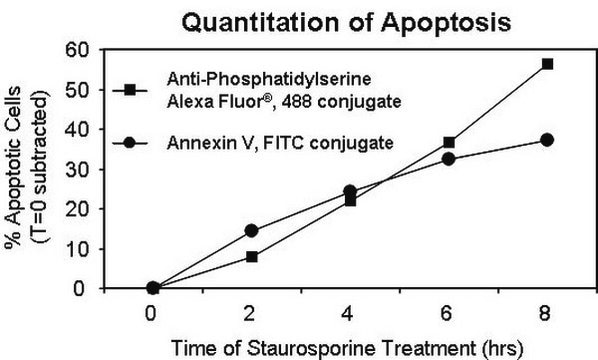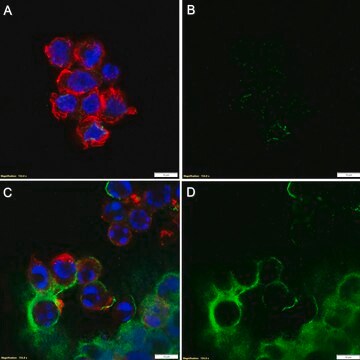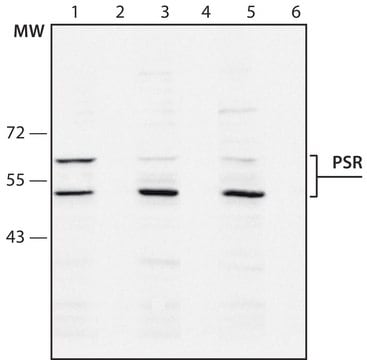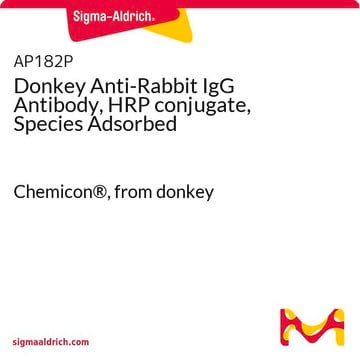The concentration of this antibody is 1 mg/mL. This information is published in the product Certificate of Analysis.
05-719
Anti-Phosphatidylserine Antibody, clone 1H6
clone 1H6, Upstate®, from mouse
Sinônimo(s):
Anti-Phosphatidylserine, Clone 1H6 Anti-Phosphatidylserine, Phosphatidylserine Detection
About This Item
Produtos recomendados
fonte biológica
mouse
Nível de qualidade
forma do anticorpo
purified immunoglobulin
tipo de produto de anticorpo
primary antibodies
clone
1H6, monoclonal
reatividade de espécies
vertebrates
fabricante/nome comercial
Upstate®
técnica(s)
flow cytometry: suitable
immunohistochemistry: suitable
Isotipo
IgG
Condições de expedição
dry ice
modificação pós-traducional do alvo
phosphorylation (pSer)
Informações sobre genes
human ... PTDSS1(9791)
Descrição geral
Anti-Phosphatidylserine may be used to detect translocation of the membrane phospholipid phosphatidylserine (PS) from the inner to the outer cell membrane leaflet; it provides an alternative to Annexin V for quantitation of apoptosis.
Especificidade
Imunogênio
Aplicação
Immunohistochemistry: This antibody has been reported by an independent laboratory to detect phosphatidylserine in rat carotid artery paraffin sections fixed with ethanol/acetone (Mandinov, L., 2003).
Apoptosis & Cancer
Apoptosis - Additional
Qualidade
Descrição-alvo
forma física
Armazenamento e estabilidade
Nota de análise
Brain tissue
Outras notas
Informações legais
Exoneração de responsabilidade
Não está encontrando o produto certo?
Experimente o nosso Ferramenta de seleção de produtos.
Código de classe de armazenamento
10 - Combustible liquids
Classe de risco de água (WGK)
WGK 1
Certificados de análise (COA)
Busque Certificados de análise (COA) digitando o Número do Lote do produto. Os números de lote e remessa podem ser encontrados no rótulo de um produto após a palavra “Lot” ou “Batch”.
Já possui este produto?
Encontre a documentação dos produtos que você adquiriu recentemente na biblioteca de documentos.
-
What is the concentration of this antibody in mg/mL. Only total quantity as 200 ug is given on the vial.
1 answer-
Helpful?
-
-
What's the concentration and volume of this antibody?
1 answer-
The concentration, and therefore volume, can vary between lots. As of April 2024, The concentration is 1mg/mL and the volume is 200uL.
Helpful?
-
Active Filters
Nossa equipe de cientistas tem experiência em todas as áreas de pesquisa, incluindo Life Sciences, ciência de materiais, síntese química, cromatografia, química analítica e muitas outras.
Entre em contato com a assistência técnica







